From Brandywine to Green Zebra: A Farmers Market Guide to Tomatoes
July 22, 2022
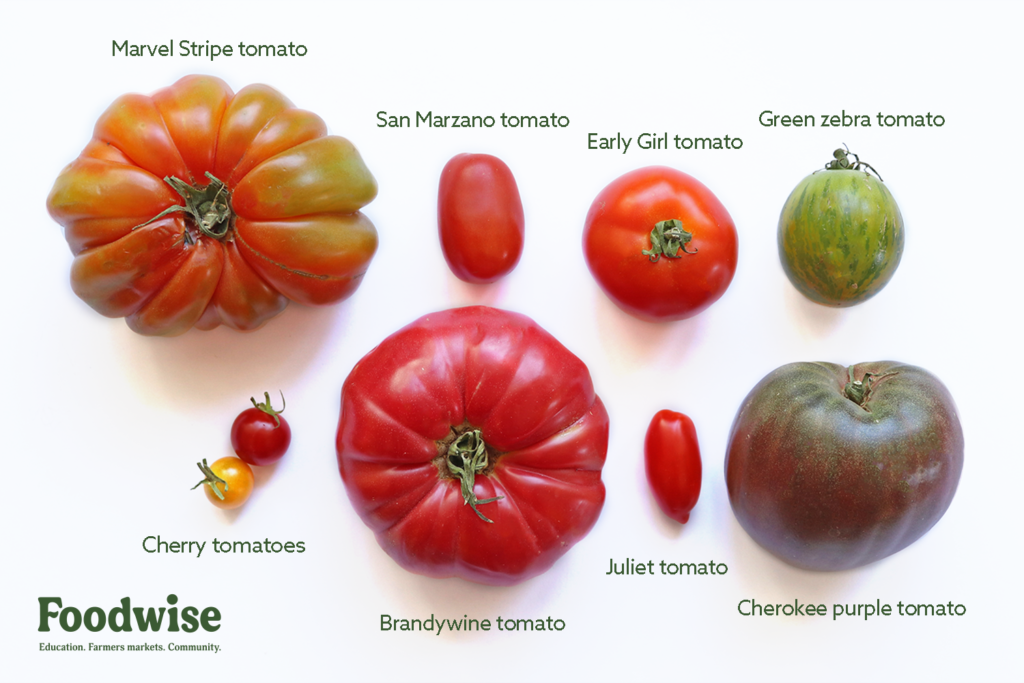
With tomato season in full swing, there’s a lot to love about the rainbow of variety you can find only at farmers markets. Solid, striped, or speckled and in red, yellow, green, purple, and every shade in between, tomatoes present an overwhelming choices, while the names of the varieties are as intriguing as they are colorful: Black Prince, Early Girl, Mortgage Lifter, Green Zebra, Ivory Pear, and Pineapple.
So amid all the variety, which tomatoes do you pick and what do you do with them? Here are some tips to help you navigate this juicy dilemma and make the most of peak tomato season.
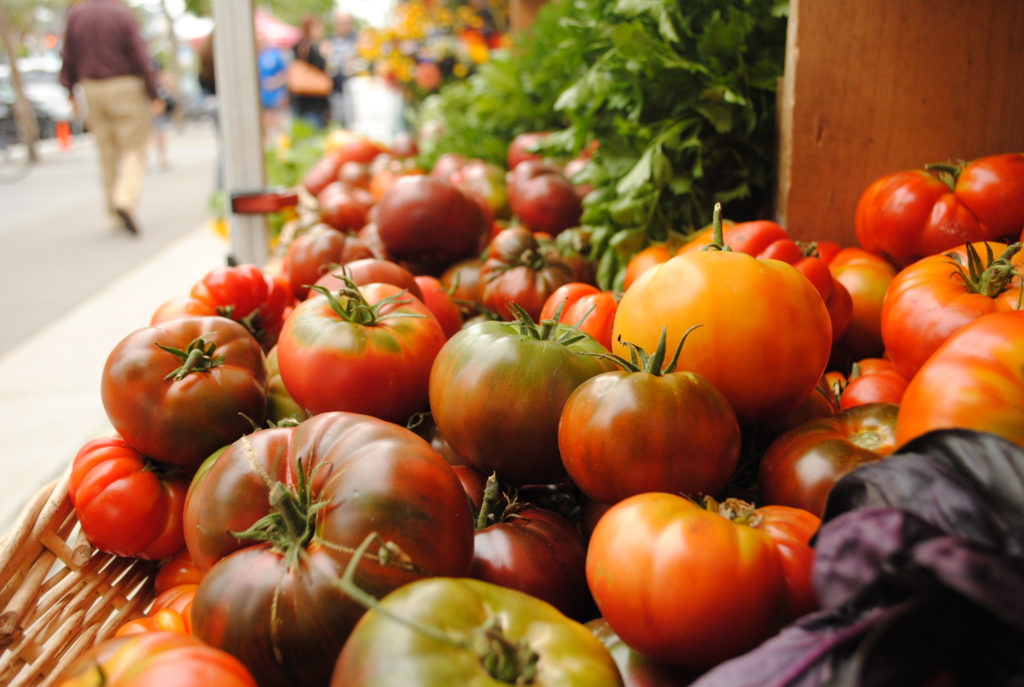
What Makes Farmers Market Tomatoes Special?
Some of the key difference between locally grown farmers market tomatoes and those you find at the grocery store are ripeness, flavor, and variety. Grocery store tomatoes are generally picked before they are fully ripe, so they can be transported long distances and stored for many days. Because they are picked, processed, and packaged before developing their full flavor, they often taste bland and mealy. Supermarket tomatoes are also missing a gene that allows them to produce sugar, which makes them lack that sweet, juicy flavor.
Farmers market tomatoes, on the other hand, are picked at peak ripeness and brought to the market when their flavor, juiciness, and nutrient value are at their full potential. That means they have a shorter shelf life and you will need to handle them with care. While lackluster store-bought tomatoes are available year-round (generally because they are transported from other parts of the world), farmers market tomatoes are only available when they’re in season.
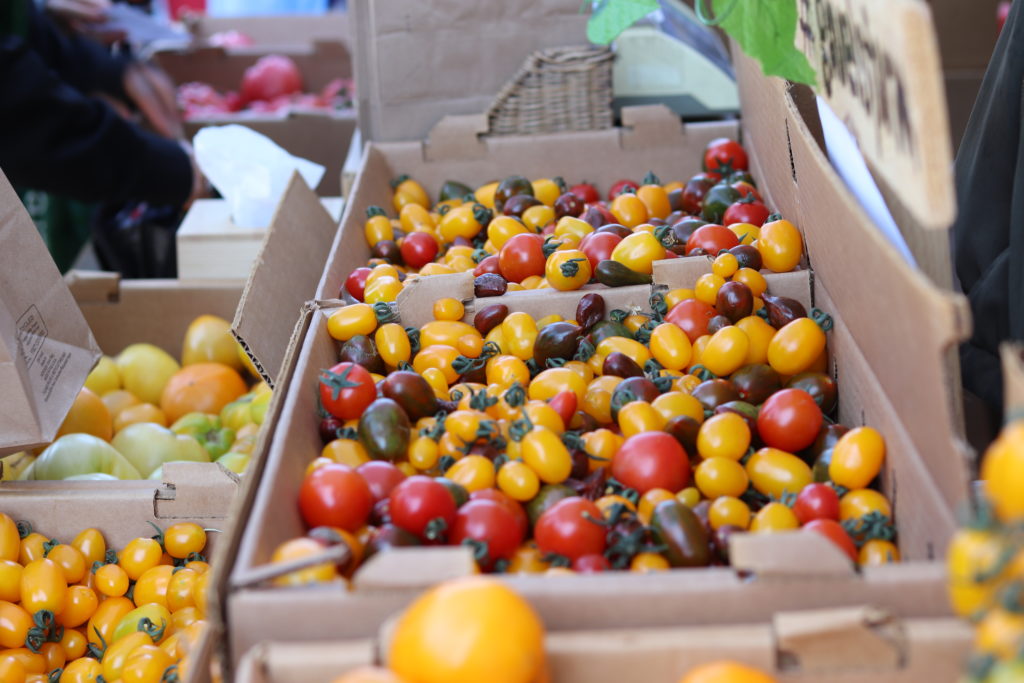
Tomato Seasonality: Hothouse vs. Field-Grown
Field-grown tomatoes are usually available at the farmers market June through October, though farms such as Peach Farm, Elston Family Farm, and Gavel’s Farm are able to extend the season by a couple months by growing tomatoes in hothouses. Their vine-ripened tomatoes hit the farmers market in early spring, providing a sweet taste of the warm season ahead. During colder months, having greenhouses offers some control and predictability for farmers, but due to intensive labor and the use of energy, hothouse tomatoes make less sense in the summer months, especially when field-grown tomatoes are widely available.
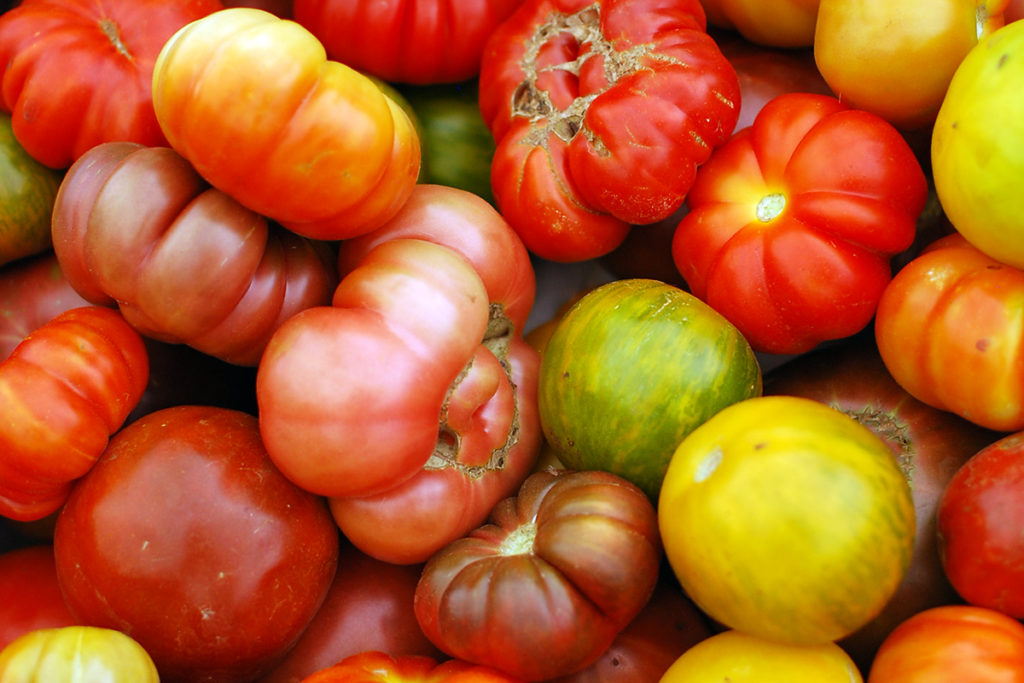
Heirloom vs. Hybrid
At the farmers market, you’ll also noticed the diversity of heirloom tomato varieties, each one unique and tasty. Most people associate “heirloom” with big, juicy slicing tomatoes, but heirlooms come in all shapes and sizes. Heirlooms are varieties whose seeds have been saved by farmers and gardeners and passed down for generations, usually 50 years or more. Their seeds can be saved and replanted with fairly consistent results, and they tend to be genetically diverse, making them more adaptable to different growing conditions.
Hybrid seeds, on the other hand, are created by cross-pollinating two different varieties to yield offspring with desirable traits from both parent plants, such as disease resistance, uniformity, and high yield—a phenomenon known as “hybrid vigor.” Early Girl, Sun Gold, and Juliet are just a few of the popular hybrid tomatoes. While some argue that hybrids are more reliable and hardy than heirlooms, hybrids also have serious drawbacks because farmers must buy new seeds each year.
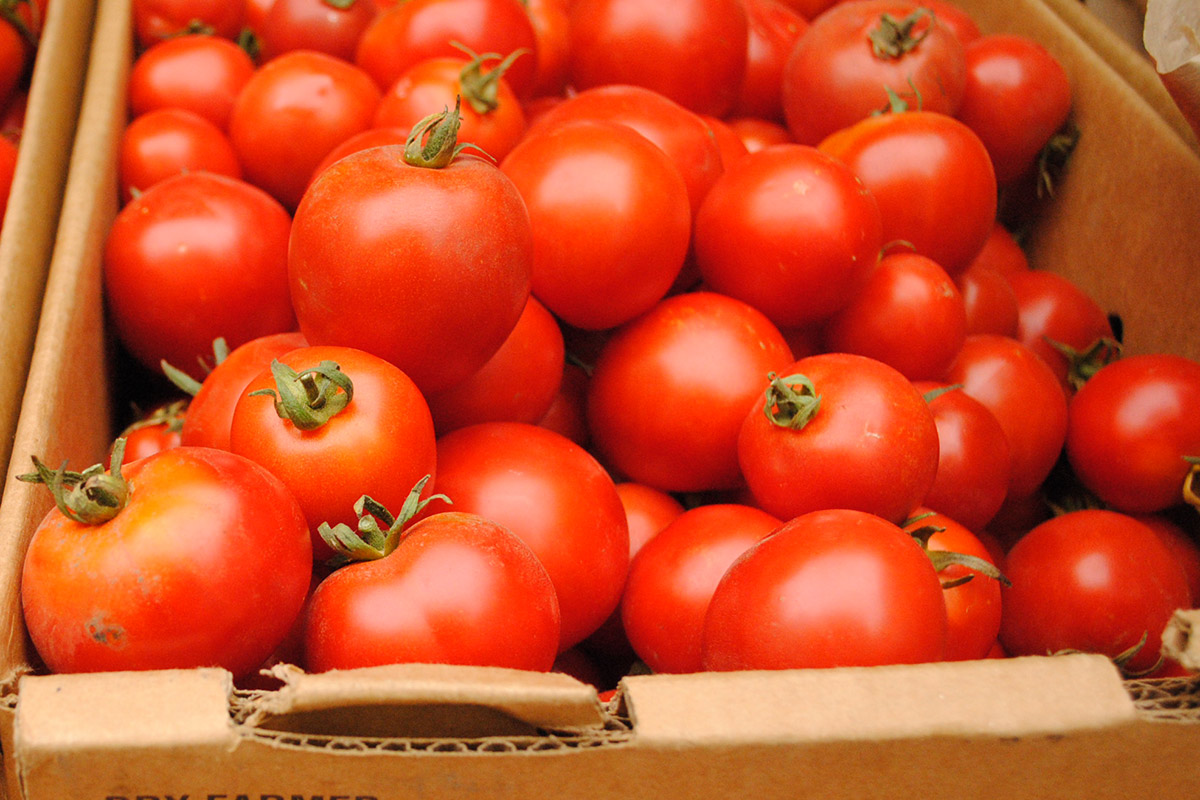
What about Dry Farming?
Farmers such as Joe Schirmer of Dirty Girl Produce employed dry farming by using minimal water to irrigate and relying on soil moisture from seasonal rainfall or one deep watering. Happy Boy Farms withholds irrigation once the tomato roots are established, which forces the plants to send their roots deeper into the soil and seek out water. These techniques result in smaller but more flavorful tomatoes.
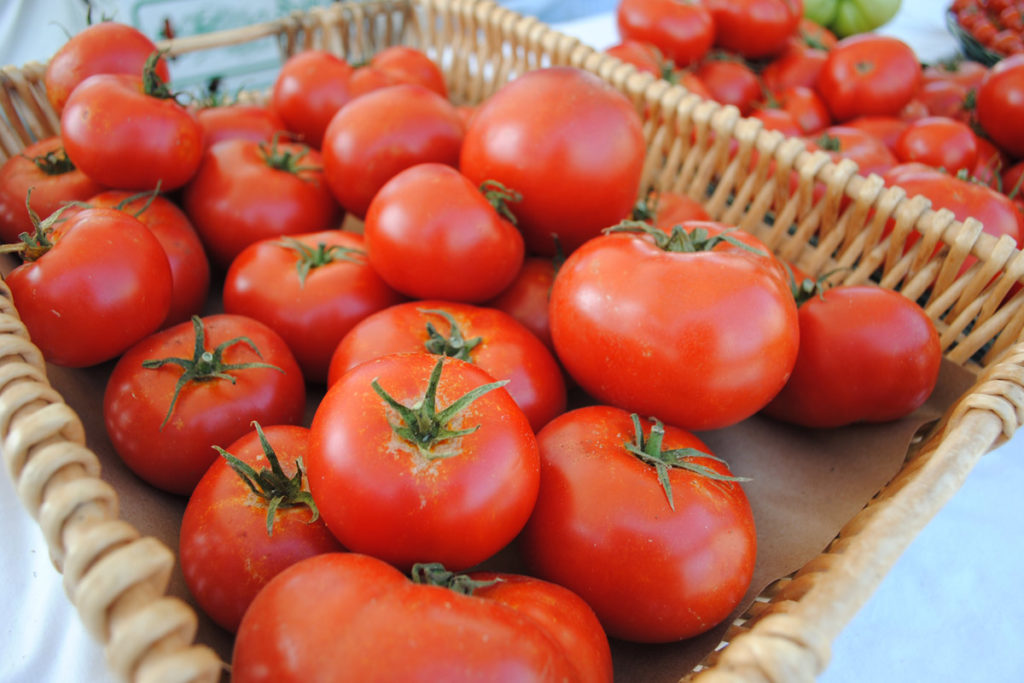
Common Types of Tomatoes
There are too many varieties of tomatoes to list here, but we’ve put together a list of some of the more common ones you’ll find at the farmers market, along with some tips on how to enjoy them.
Brandywine tomato: Brandywine is a pink heirloom of the beef or beefsteak variety—large, juicy varieties, perfect for slicing and eating raw. It has a robust tomato flavor deep pink-red color, but it also comes in other colors such as yellow. You can slice them into salads or chop them into heirloom tomato sauces.
Cherokee purple tomato: The Cherokee purple tomato, another heirloom variety, has a dark red-green-purple flesh and a deep red interior. Its sweet, rich taste is perfect to prepare in sandwiches or salads.
Cherry tomatoes: Cherry tomatoes range in size as well as colors, such as red, yellow, green, and even black! Also known as grape tomatoes, these tomatoes are extremely versatile and can be eaten raw as a snack, added to salads, grilled on skewers, made into gazpacho, or roasted on a summer bruschetta or pasta.
Early Girl tomato: Early Girl tomatoes tend to have thick skin, compact round shape, and deeply concentrated flavor, particularly when they are dry farmed. These rich, sweet tomatoes are great to incorporate into sauces, salads, gazpachos, and even jams.
Green Zebra tomato: The Green Zebra has dark green and yellow stripes and is often more tart than normal tomatoes. Try them in gazpacho, caprese salads, and can also be fried. Keep an eye out for flame-striped Red Zebra tomatoes, too!
Juliet tomato: Resembling a small Roma, this plum tomato variety is slightly larger than a grape tomato and contains a sweet, fruity flavor. It works well in salads and sauces.
Marvel Stripe tomato: Considered the largest of bi-colored heirloom tomatoes, the Marvel Stripe tomato has a deep orange exterior and streaked thin, red strips. It has a smooth, bright, and sweet flavor, which can be prepared in salads or pastries for a sweeter fare.
San Marzano tomato: A plum tomato variety, the San Marzano has a strong yet sweet taste and tend to be less acidic. Most people use these paste tomatoes for canning, but you can incorporate them into a tomato sauce as well.
To find more recipe inspiration, check out our recipe archive.
Discover more varieties of tomatoes and which farms grow them at CUESA’s farmers markets here.
Topics: Farmers market, Produce guides, Vegetables
